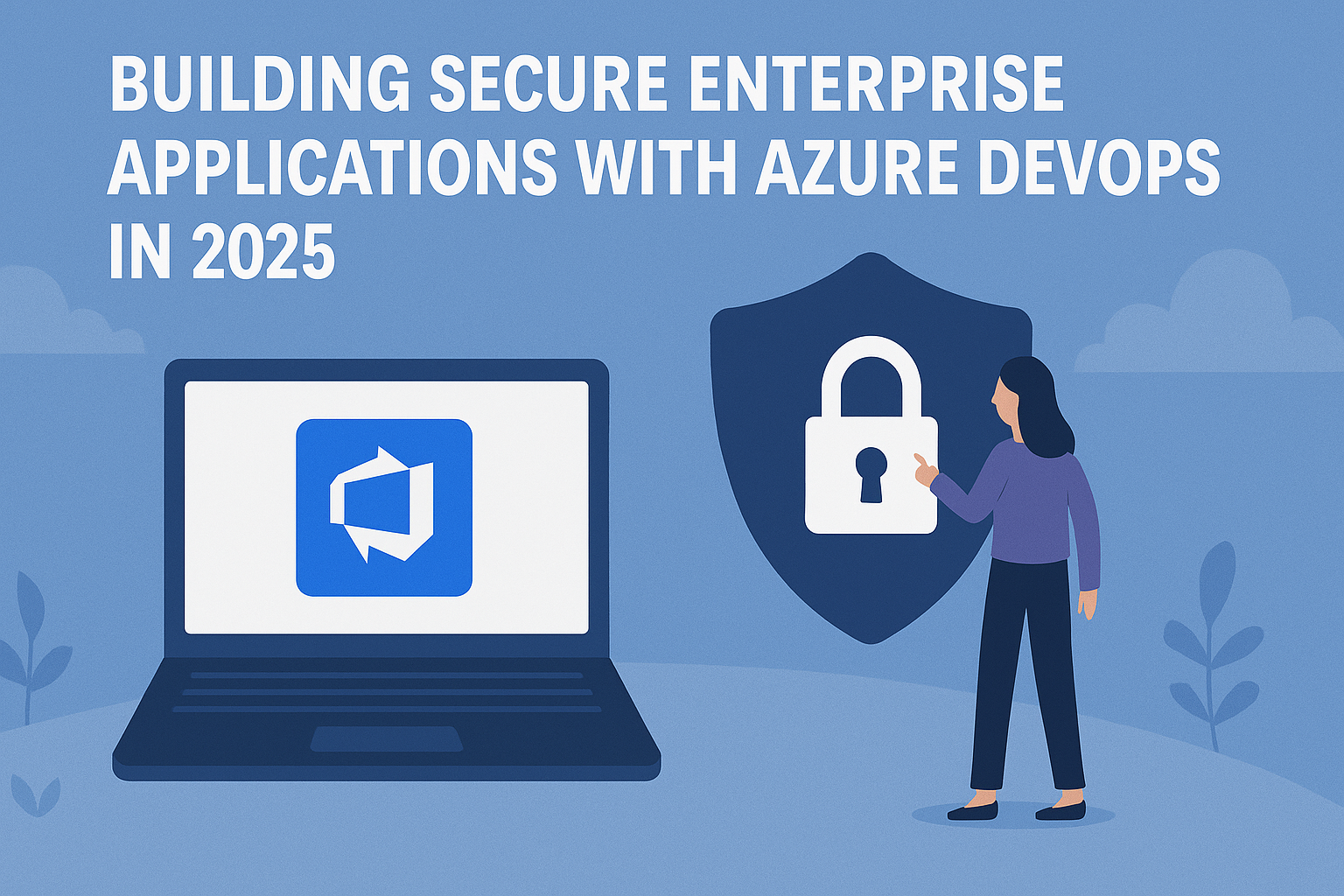In the evolving landscape of enterprise software development, integrating security into every phase of the application lifecycle is paramount. Azure DevOps has emerged as a pivotal platform, enabling organizations to seamlessly weave security practices into their development workflows. This guide explores advanced strategies to fortify your applications using Azure DevOps, ensuring resilience against modern threats.
Integrating Security into CI/CD Pipelines
Embedding security checks directly into your Continuous Integration and Continuous Deployment (CI/CD) pipelines ensures vulnerabilities are identified and addressed promptly.
YAML Pipeline with Security Scanning:
trigger:
branches:
include:
- main
variables:
buildConfiguration: 'Release'
stages:
- stage: Build
jobs:
- job: BuildJob
pool:
vmImage: 'windows-latest'
steps:
- task: UseDotNet@2
inputs:
version: '7.0.x'
- task: DotNetCoreCLI@2
inputs:
command: 'build'
projects: '**/*.csproj'
- task: SonarQubePrepare@4
inputs:
SonarQube: 'SonarQubeServiceConnection'
scannerMode: 'MSBuild'
projectKey: 'YourProjectKey'
- task: SonarQubeAnalyze@4
- task: SonarQubePublish@4
inputs:
pollingTimeoutSec: '300'Incorporating tools like SonarQube facilitates static code analysis, ensuring code quality and security compliance.
Managing Secrets and Credentials
Securing sensitive information is critical. Azure DevOps integrates with Azure Key Vault to manage secrets efficiently.
Retrieving Secrets in Pipelines:
- task: AzureKeyVault@2
inputs:
azureSubscription: 'YourAzureSubscription'
KeyVaultName: 'YourKeyVaultName'
SecretsFilter: 'YourSecretName'
RunAsPreJob: trueThis approach ensures that secrets are not hardcoded, reducing the risk of exposure.
Implementing Role-Based Access Control (RBAC)
Controlling access to resources is vital. Azure DevOps allows for granular permission settings, ensuring that users have appropriate access levels.
Best Practices:
- Assign permissions at the group level rather than individual users
- Regularly audit access rights to ensure compliance
- Utilize built-in security groups for common roles
Monitoring and Auditing Activities
Continuous monitoring helps in early detection of anomalies. Azure DevOps provides audit logs and integrates with Azure Monitor for comprehensive insights.
Setting Up Alerts:
- task: AzureMonitor@1
inputs:
azureSubscription: 'YourAzureSubscription'
actionGroupName: 'YourActionGroup'
alertRuleName: 'HighCPUUsage'
condition: 'CPUUsage > 80'
severity: 'Sev3'Proactive alerts enable swift responses to potential issues, maintaining system integrity.
Incorporating Automated Testing
Automated testing ensures that new changes do not introduce vulnerabilities. Integrate testing frameworks into your pipelines for continuous validation.
Example:
- task: VSTest@2
inputs:
testSelector: 'testAssemblies'
testAssemblyVer2: |
**\*test*.dll
!**\*TestAdapter.dll
!**\obj\**
searchFolder: '$(System.DefaultWorkingDirectory)'
codeCoverageEnabled: trueRegular testing maintains code quality and detects issues early in the development cycle.
Final Thoughts
Integrating security into every phase of the development lifecycle is no longer optional—it’s essential. Azure DevOps provides a robust framework to embed security practices seamlessly, ensuring that enterprise applications are resilient against evolving threats. By adopting these strategies, organizations can build secure, reliable, and compliant applications that stand the test of time.
For further insights and detailed guidance, refer to Microsoft’s official documentation on Azure DevOps Security Best Practices.
Security, speed, and scalability—get all three with 200OK Solutions. We specialize in building secure, enterprise-grade applications using Azure DevOps best practices. From automated compliance checks to full-fledged DevSecOps pipelines, we help businesses ship faster without compromising on security.
🔒 Secure your enterprise app the right way. Partner with 200OK to modernize your development process.


